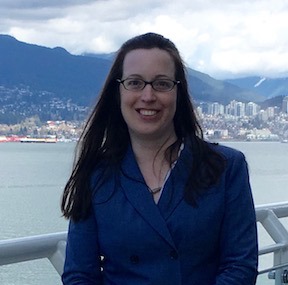Affiliation: Binghamton University (SUNY)

Hilary Becker is Associate Professor of Classics with the Department of Middle Eastern and Ancient Mediterranean Studies at Binghamton University. She earned her A.B. at Bryn Mawr College and her M.A. and Ph.D. at the University of North Carolina at Chapel Hill. She has published articles dealing with Etruscan economy and settlement patterns and co-edited, along with Margarita Gleba, the volume Votives, Places and Rituals in Etruscan Religion (Brill 2009). She is currently writing a book entitled Commerce in Color about the trade in Roman pigments, an investigation that started with her research on the only surviving pigment shop from ancient Rome. Professor Becker was the AIA Cinelli Lecturer for 2019/2020.
The discovery of the only known pigment shop in ancient Rome revealed an array of colors in their raw, mineral form waiting to be sold to wall painters. Ancient pigments provide a surprising opportunity to understand how science can be used in archaeology, revealing what pigments were present in the shop and, potentially, the source from which they originated, as well as exploring the supply-side economy of Roman painting and the steps by which these pigments went from the mine, to a shop, to the walls of a Roman house. This lecture also explores the economy of the Roman pigment trade, looking at the prices of pigments as well as the potential for their adulteration.
The competition for natural resources and the desire to increase a shop’s revenue led some Roman merchants to engage in retail fraud. Papyri from Roman Egypt provide recipes with instructions on how to produce fake gemstones and pearls from crystals, as well as cheap ways to counterfeit “true” purple. There was similarly great fraud amongst other naturally sourced products ranging from aromatics, to pigments, to medicines.
But there were ways to negotiate such a treacherous commercial landscape. Ancient authors, such as Pliny the Elder, who knew full well the pitfalls of the market, offered methods for a purchaser to discern authentic natural sourced products (e.g. metals, pigments) from imposters. Archaeological evidence also indicates that the scrupulous producer or merchant, in turn, might be motivated to stamp or otherwise label his or her products in order to guarantee that their products are unadulterated. All of these circumstances suggest that for the wary consumer (caveat emptor), there was significant marketplace competition for his attention between trustworthy merchants and those merchants who should be avoided. This lecture provides insight into the potential pitfalls of the Roman supply industry that every consumer needed to know about and had to navigate.
In order to explore the working knowledge of creating a Roman fresco, this lecture steps behind the scenes of a Roman painting to learn about the stages that artisans followed to create it. We will look at a variety of evidence, including the writings of ancient authors such as Pliny the Elder and Vitruvius, as well as Roman paintings themselves, including some that were in the course of production when Mt. Vesuvius erupted in 79 A.D. How did the painter develop a refined, empirical knowledge of not only craft but also materials? What materials did Romans avoid using for their painting and why? Which materials could only patrons themselves acquire? How could an artist (or a group of artists) coordinate and create a single large painting over the course of several days? Taken together, our datasets – ranging from texts and art historical approaches to scientific analyses at the cutting edge – help to test the case for what the knowledge base of the Roman wall painter might have been.